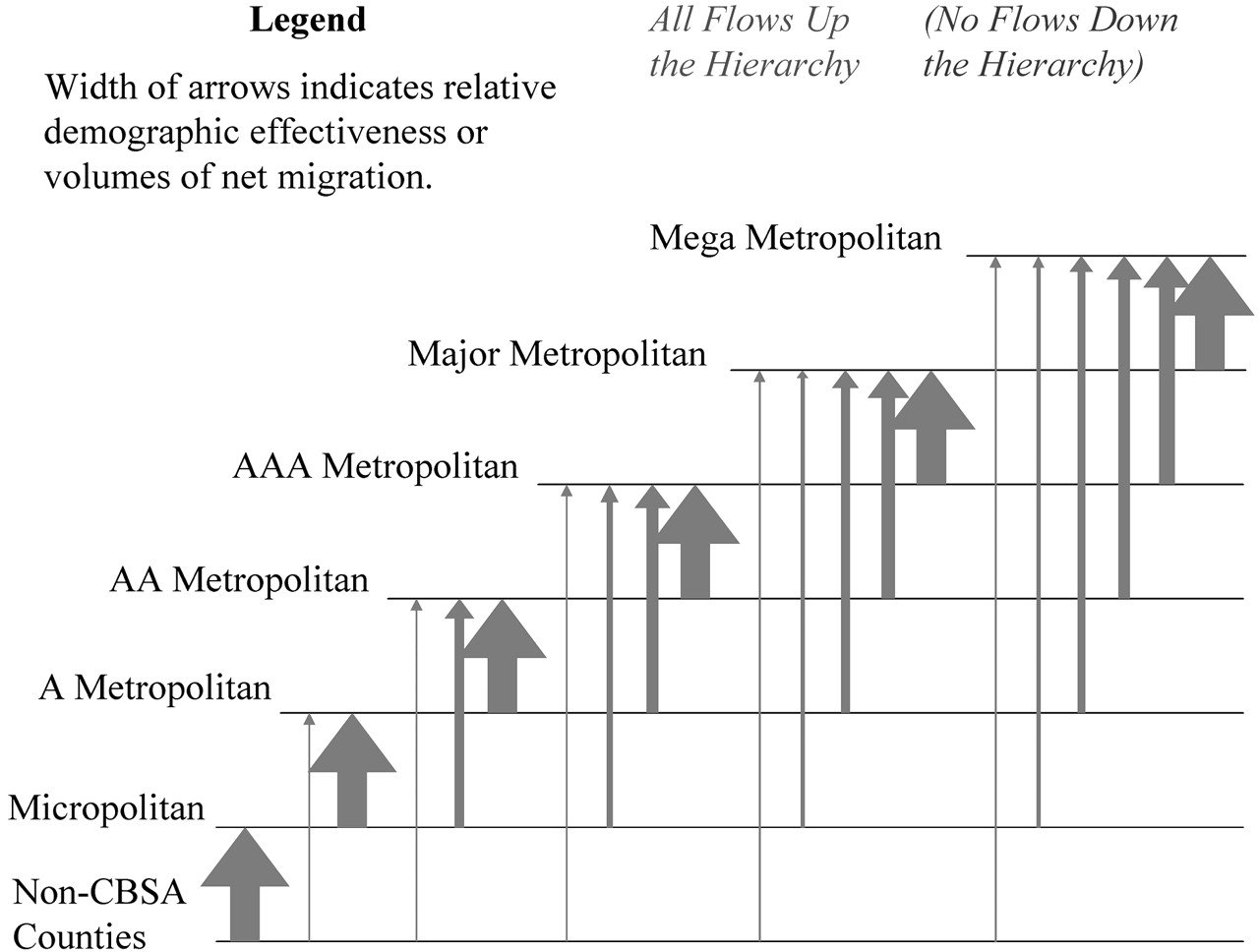文章信息:D. A. Plane, C. J. Henrie, & M. J. Perry. (2005). Migration up and down the urban hierarchy and across the life course. Proceedings of the National Academy of Sciences: 102(43), 15313–15318. https://doi.org/10.1073/pnas.0507312102
整理人:杨文,2023级硕士生
整理时间:2024年8月4日
Abstract: In this article, we begin by reviewing the concept of step migration that originated in E. G. Ravenstein's seminal papers “The Laws of Migration” (1885, 1889). As a result of the forces of the Industrial Revolution underway in 19th century Great Britain, migrants moved from farms to villages, from villages to towns, from towns to county seats, and thence to large cities. Throughout much of the industrialization era in the United States, net population movements similarly were upward within the urban hierarchy, and step migration today remains widespread throughout much of the still developing world. Our investigations of recent data and trends, however, suggest that the latest U.S. migration-pattern regime is a strongly contrasting one. Many of the major movements in the system of internal (or domestic) migration are flows down the urban hierarchy, although we note highly differentiated patterns for persons and households at specific stages of the life course. We make use of the newly defined metropolitan and micropolitan Core-Based Statistical Areas (CBSAs) and a seven-level size typology to tabulate origin-destination-specific migration flow data from both Census 2000 and IRS tax-return administrative records for the period 1995-2000. We discuss the causes for net movements being either upward or downward in the national urban hierarchy, including the effects of spatially focused immigration, and movement preferences at various ages, including migration in young adulthood associated with entering and leaving college and the military, as well as moves characteristic of the stages of family formation, childrearing, and retirement.
摘要:本文首先回顾了E.G.Ravenstein的开创性论文《迁移定律》(1885年、1889年)中提出的台阶迁移概念。由于19世纪英国工业革命的力量,移民从农场搬到了村庄,从村庄搬到了城镇,从城镇搬到了县城,然后又搬到了大城市。在美国工业化时代的大部分时间里,城市等级制度中的净人口流动同样是向上的,如今,阶梯式移民在许多仍在发展的世界中仍然普遍存在。然而,我们对最近数据和趋势的调查表明,美国最新的移民模式制度是一个截然不同的制度。内部(或国内)移民体系中的许多主要流动都是城市等级制度下的流动,尽管我们注意到在生命过程的特定阶段,个人和家庭的模式存在高度差异。我们利用新定义的大都市和微观大都市核心统计区(CBSA)以及七级规模分类法,将1995-2000年期间2000年人口普查和美国国税局纳税申报行政记录中的特定来源地移民流量数据制成表格。我们讨论了国家城市等级中净流动向上或向下的原因,包括以空间为中心的移民的影响,以及不同年龄段的流动偏好,包括与进入和离开大学和军队相关的青年移民,以及家庭组建、育儿和退休阶段特有的流动。

图 Ravenstein迁移系统
所有净迁移都沿着微城市/大都市的频谱向上,最大的净流量是层次结构相邻级别之间的阶梯迁移。

图 1999-2000年,微观城市/大都市范围内净移民流动的相对量
显示的百分比是层次结构所有级别之间的总净迁移百分比。

图 1999-2000年,微观城市/大都市范围内移民流动的人口有效性百分比
100%的有效率意味着所有总流量都在一个方向上;0%表示向上和向下的总流量相等。

图 1995-2000年县人口变化的组成部分

图 1995-2000年按CBSA等级划分的5岁年龄组的净移民率
请注意,所示年龄为2000年人口普查日期的受访者年龄;迁移可能发生在5年前,因此迁移时的平均年龄比所示范围年轻约2.5岁
原文链接:https://www.pnas.org/doi/full/10.1073/pnas.0507312102